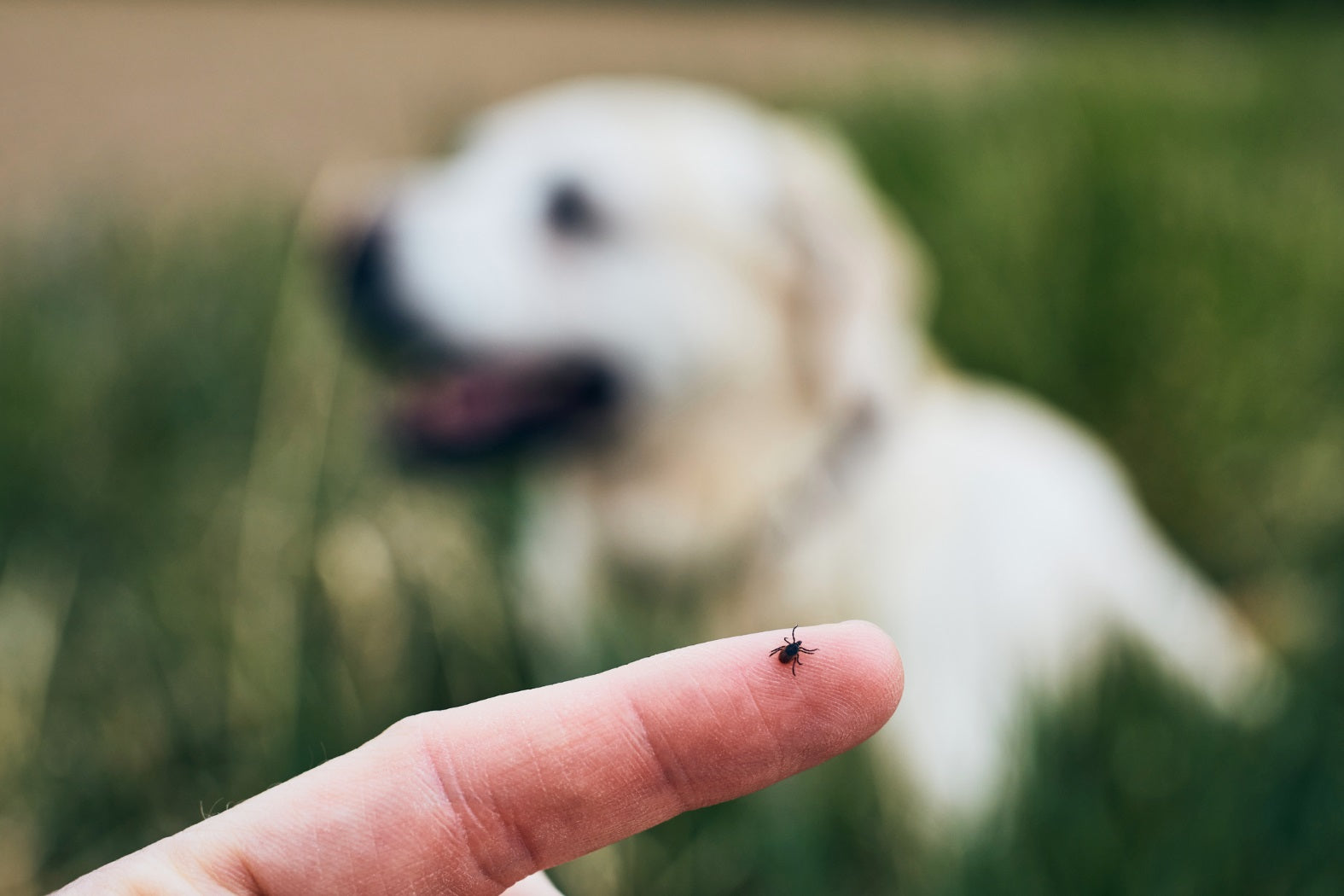Food allergies in dogs, also known as adverse food reactions, can cause skin problems, gastrointestinal problems and sometimes both of these together. Unfortunately, they can be very tricky and time consuming to diagnose. This is because the symptoms seen with food allergies can look very similar to the symptoms seen in many other diseases and they can be complicated by other factors such as concurrent environmental allergies, parasites and skin or gut infections.
Unfortunately, there is no quick and easy blood test available for diagnosis. Currently the best way to diagnose a food allergy in dogs is through an elimination diet trial. This involves eliminating possible allergens from your dog’s diet and assessing their response. If done well this will help to determine if the skin and/or gut issues you are seeing are diet related. This blog answers all the most common questions that pet owners have about doing an elimination diet trial.
Should I do an elimination diet trial?
You should consider doing a food trial if you dog fits one or more of the following criteria:
- Your dog has gastrointestinal symptoms such as chronic diarrhoea, vomiting, gas, straining to poo or passing more than 3 bowel movements per day.
- Your dog is itching all year round. Dogs whose itching is clearly seasonal are more likely to have environmental allergies.
- Your dog has not responded well to anti-itch medications such as Apoquel, Cytopoint and prednisone.
- Your dog has being having recurrent ear infections (could be just one ear), for which other common causes have been ruled out.
- Your dog has recurrent secondary skin infections for which other causes, such as hormonal issues, have been ruled out.
Another consideration is the age of onset of these symptoms, as this can give us a hint about the likelihood of a food allergy. Dogs whose symptoms began at less than 1 year of age or older than 8 years of age are more likely to be diagnosed with a food allergy.
What should I feed for an elimination diet trial
There are two main options: a hydrolysed protein diet or a novel protein diet.
1. Hydrolysed diets
Hydrolysed diets are currently considered the ‘gold standard’ option. As they are highly specialised diets they are only available on prescription from your vet. These diets contain a protein source that has been broken down at a molecular level into pieces that are theoretically too small for the body’s inflammatory system to react to. Due to the costs of manufacturing they are the most expensive option and some dogs don’t find them very palatable. However, I do recommend that you consider them as your first choice for a diet trial, especially if you have a rescue dog with an unknown diet history or if your dog has consumed most of the common novel protein sources.
2. Novel protein diets
Novel protein diets are a second, generally more cost effective, option. This involves selecting a diet with a novel (or new) protein and carbohydrate source that your dog has not previously eaten, which can be challenging. This approach relies on you having a good memory for what different brands and flavours your dog has previously eaten, as well as treats fed, dietary supplements and flavoured medications used! You can see why it gets tricky.
The other problem is that so many dog foods are now formulated using multiple meat protein sources in one food. This is done to appeal to the person buying the pet food, not because of any nutritional benefit for the pet itself. Yet another triumph of marketing over common sense! The worst offender I have seen recently had 5 different proteins in one flavour, including using Bison, mixed in with a bunch of the most common meat proteins know to cause food allergies, when it would have been better reserved for a novel protein diet.
Fortunately, fish is still a relatively uncommon protein used in pet food and so that is why we use fish, sourced from both New Zealand King Salmon and from wild caught, New Zealand sourced fish meal, in our diet. We also use rice, as for many dogs this is also a novel carbohydrate source, as again it is not commonly used in pet food.
Before you start a diet trial do these two things
1. Set up a record keeping system
Keep a record of what your dog’s symptoms were like before you started. For dogs with gastrointestinal symptoms that means noting down their symptoms including the severity and frequency, and maybe even taking some photos of their faeces for comparison!
For those with skin issues some photos of the main areas where their lesions are a good idea. There is also a great 10 point itch scale that you can use to rate their symptoms as you go through the trial. Just google Canine Itch Scale to find that.
2. Secondary infections and itch control
During the initial phases of the diet trial for itchy dogs it’s important to try to resolve any itching and secondary infections that may mask the improvements from the diet. You will need to work with your vet to determine exactly what is needed, but for many dogs this means they will start their diet trial on an anti-itch medication such as Apoquel, Cytopoint or prednisone and possibly an antibiotic and/or medicated wash, ear drops or other topical therapy. Controlling fleas during a diet trial is also important.
Your vet will prescribe an appropriate course of medications and once these are finished you will be able to evaluate the dog’s response to the actual diet trial.
How to do a food trial
This is simple – yet hard! Select your diet (either hydrolysed or novel protein) and transition your dog onto this diet over a period of 1-2 weeks. It is important that once you’ve started the diet trial your dog must not eat anything except the food you’re using for the trial. This means no table scraps, no treats and no flavoured medications or chews. You need to be really strict on this, so make sure everyone in the household knows the rules! The only exception would be any prescription treats that go with a prescription diet or single protein treats that are from the same protein as your chosen diet.
How long will my dog take to respond?
Dogs with gastrointestinal symptoms usually respond pretty quickly to an elimination diet and you should see a good response in 7-10 days, but it may take up to a month for an improvement to be noticeable.
Dogs with skin issues usually take a lot longer to respond and it is generally recommended to trial the food you have selected for 8-12 weeks.
What do I do if my dog improves?
If your dog improves significantly on the diet you have chosen, then you can assume that their previous food was the cause of their symptoms. But to be 100% sure the best thing to do is to rechallenge with the former diet, or selected ingredients, to ensure that a food allergy diagnosis is accurate.
Realistically though most people don’t do this because it’s pretty stressful putting your dog back onto a food that has previously caused issues! However, if you choose not to rechallenge its important to realise that there is a small chance that the improvement is related to other factors like treating skin infections or a seasonal change, when it’s actually an environmental allergy.
If you do choose to rechallenge your pet then you will most likely notice symptoms recur within 72 hours, but symptoms may take up to 14 days to flare up again.
What if my dog hasn’t improved?
If the diet trial was unsuccessful, but you still suspect your dog has a food allergy then you can try another diet. There is no one best food that is right for every dog and some trial and error may be needed before you find the right one. If your first diet trial used a novel protein approach, then trying a hydrolysed diet would be my next suggestion.
Some dogs will show only a partial improvement. This may be due to concurrent environmental allergies, especially those that are non-seasonal such as house dust mites. The next step for these dogs and for those that have shown no improvement is further diagnostic workup, such as intradermal skin testing or endoscopy, depending on the clinical signs present.
This is often a good time to consider referral to a veterinary specialist. My personal opinion is that you are better to go to a specialist earlier rather than later and you certainly want to visit a specialist before you have tried every novel protein and every hydrolysed diet on the market!



